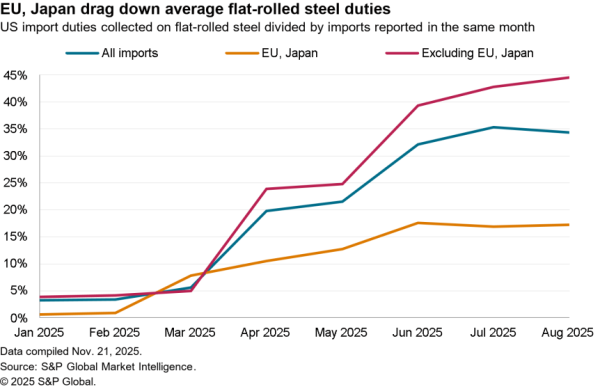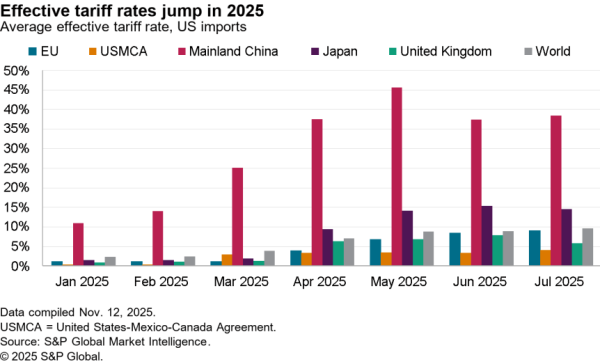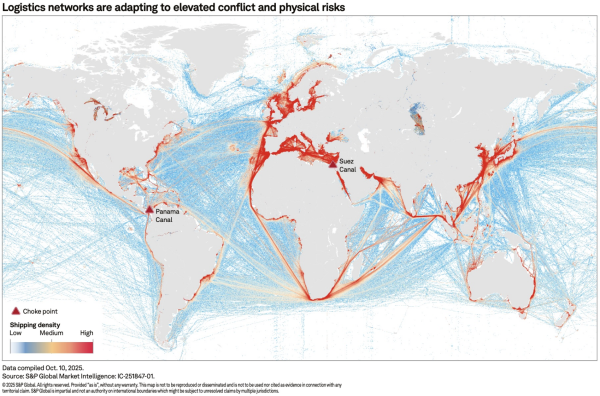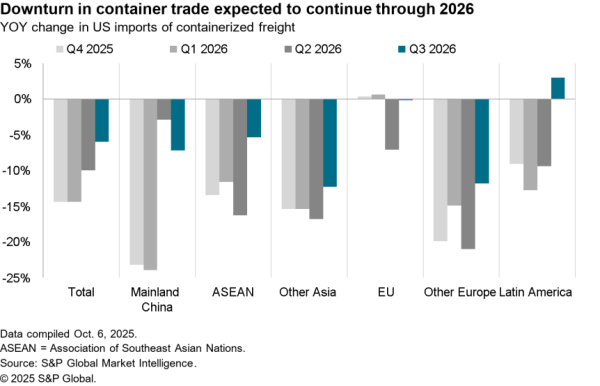The Biden Administration announced a deal with the Port of Los Angeles and labor unions to start running the port all day. This will likely boost capacity at one of the key foci of U.S. import bottlenecks, the Ports of LA and Long Beach, increasing throughput to meet strong holiday demand. Panjiva data on U.S. imports handled by the port shows that volumes in September were only 1.5% year over year higher than the same month in 2020, when imports had picked up after lockdowns loosened. The extra operations may be necessary to push capacity above these peak levels, as discussed in Panjiva research of Oct 6. The Port of LA is also usually viewed as a system with the Port of Long Beach, being located in roughly the same location. While the ports have different strengths and weaknesses, volume is roughly split between them with 54.6% of volume moving through the Port of LA in Q3.
Increased unloading hours from the ports may only be part of the puzzle however, as boosting the capacity to handle vessels now puts congestion pressure on downstream operations, including container storage, warehousing, trucking, and rail. The supply issues in these areas may rise to the forefront of discussion as the bottleneck point moves to a different area. On the other side of the supply chain, increases in port operations could reduce the pressures on carriers and freight rates, making the prediction that Matson’s CEO made at the end of July that they “expect the supply chain and supply-demand conditions to remain in place and lead to a high level of demand at least into Lunar New Year” more likely.

Source: Panjiva
Samsung was one of the companies named in the announcement, saying that they would “move nearly 60% more containers out of these ports by operating 24/7 through the next 90 days” helping connect some of the downstream factors that could continue to delay shipments. It could also help increase Samsung’s associated imports through the ports of LA and Long Beach which fell by 5.8% year over year in Q3, although increasing by 23.7% year over year compared to 2019.
Other electronics companies like HP, Robert Bosch, and LG also ship through the two ports, with LG showing a 43.7% year over year increase in Q3 volumes. HP and Bosch saw imports in Q3 fall by 36.6% and 7.4% year over year against 2020, potentially showing the impact of increased congestion bringing down import levels against the surge last year.
Other firms that may benefit from increased capacity in LA and Long Beach include Honda and Mattel, with the former likely impacted by the automotive chip shortage and the former hoping to get additional goods into the country before the holidays. Honda saw imports continue to decline, down 70.7% year over year through the two ports in Q3, possibly indicating a shift to other import avenues. Mattel has more likely been hit by congestion, with imports falling by 3.2% year over year against 2020 or 6.9% against Q3 2019.

Source: Panjiva




